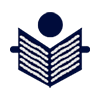During the
Covid-19 pandemic and the concomitant lockdowns, people may have found it
difficult to visit eye clinics or hospitals, but globally, ophthalmology has
been witnessing a healthy growth. Several factors are contributing to this growth, such as
increasing prevalence of eye diseases due to factors like diabetes, rising
geriatric population the world over, and disorders linked to increased screen
time. As a result, we are seeing several Big Pharma increase their focus on ophthalmology.
According to
various market studies, the market for ophthalmic drugs is growing at 5.6 to
6.52 percent per annum. The size of the global ophthalmology market was estimated to be US$ 55.28 billion in 2021,
and is projected to grow at a compounded annual rate of 6.52 percent to reach
US$ 81.05 billion by 2027.
In our first ophthalmic review, we look at the major players in the market, significant deals in the recent past, various ocular diseases and conditions, generic and first-time approvals, and future projections.
Access the Ophthalmology Newsmakers Dashboard
Increasing focus on geographic atrophy
The global
ophthalmology market is dominated by players such as Novartis, Bausch & Lomb, F. Hoffmann La-Roche, Regeneron Pharmaceuticals, Allergan, Alcon and Japanese drugmaker Santen Pharmaceutical, among
others.
The top medical conditions in ophthalmology are age-related macular degeneration (AMD) and macular edema, dry eye syndrome, glaucoma, cataract, retinitis pigmentosa and diabetic retinopathy, presbyopia, and uveitis. Topical, local ocular (i.e., subconjunctival, intravitreal, retrobulbar, and intracameral), and systemic delivery are the most frequently used approaches to deliver ocular drugs, though a number of modern ocular delivery systems are gaining popularity.
Geographic
atrophy (GA), an advanced form of AMD, is a condition that affects the retina,
a part of the eye that sends information to the brain to enable sight. GA is a
leading cause of blindness, affecting approximately 5 million patients
worldwide, with no approved treatment.
A significant
amount of deals in
ophthalmology were triggered by GA. Take the case of Novartis. In November last
year, the Swiss drugmaker decided to offload its stake
in Roche for
US$ 20.7 billion. And the very next month, it acquired UK-based Gyroscope Therapeutics for US$ 1.5 billion. The acquisition will add an investigational, one-time gene therapy for the treatment of GA to Novartis’ portfolio. The therapy, GT005, is currently in phase 2 clinical trials.
Gyroscope also has several other retinal diseases-related assets in its
pipeline. In October 2020, Novartis had acquired
Vedere Bio,
which gave the drug behemoth access to two pre-clinical optogenetic AAV gene
therapy programs and novel delivery technology for treating inherited retinal
dystrophies and GA, among other drug programs.
Similarly, in May 2020, Boehringer Ingelheim had
collaborated with CDR-Life to develop antibody fragment-based
therapeutics for GA. Other
companies developing GA products are Apellis Pharmaceuticals-Sobi
and Annexon Biosciences.
Access the Ophthalmology Newsmakers Dashboard
Recent deals in ophthalmology
Last year saw AbbVie
and Regenxbio
collaborate on developing and commercializing RGX-314, a potential one-time
gene therapy for the treatment of wet age-related macular degeneration (wet
AMD), diabetic retinopathy (DR), and other chronic retinal diseases. RGX-314 is
currently being evaluated in patients with wet AMD in a pivotal trial utilizing
sub-retinal delivery, and in patients with wet AMD and DR in two separate phase
2 clinical trials utilizing in-office suprachoroidal delivery.
Similarly, in December, Lineage Cell Therapeutics
entered into an exclusive worldwide collaboration and license agreement
with Roche and Genentech
for the development and commercialization of a retinal pigment epithelium (RPE)
cell therapy for the treatment of ocular disorders, including advanced dry
age-related macular degeneration (dry AMD) with GA.
The same month, Aerie Pharmaceuticals had
announced an exclusive development and commercialization agreement
with Santen for
Rhopressa/Rhokiinsa
(netarsudil ophthalmic solution) and Rocklatan/Roclanda (netarsudil
and latanoprost
ophthalmic solution). The expanded collaboration includes Europe, Commonwealth
of Independent States (CIS) countries, China, India, parts of Latin America and
the Oceania countries.
In October
2020, Swedish Orphan Biovitrum AB or Sobi and Apellis Pharmaceuticals had announced a strategic collaboration to accelerate the advancement
of systemic pegcetacoplan, a targeted C3 therapy for the
treatment of multiple rare diseases with high unmet need that impact over
275,000 patients globally.
Bausch Health had spun off its eye-care business in August
2020 to unlock value in its iconic brand and its integrated portfolio of eye
health products. The spin-off has established two separate companies (a) a pure
play eye-health company; and (b) a diversified pharmaceutical company with
leading positions in gastroenterology, aesthetics/dermatology, neurology, and
international pharmaceuticals. In January this year, Bausch & Lomb announced that it plans to raise US$ 100 million through an
initial public offering.
Last year, Akorn sold off its consumer health business to
an affiliate of Prestige Consumer Healthcare for US$ 230 million. The sell-off included popular over-the-counter ophthalmology drug — TheraTears — besides several other products.
Access the Ophthalmology Newsmakers Dashboard
FDA approves first generic for
Restasis
Generic drugs offer cheaper alternatives to patients across the world. This year, ophthalmology saw the biggest generic approval when Mylan Pharmaceuticals, now Viatris, became the first company to bag the US Food and Drug Administration’s nod for Restasis (cyclosporine ophthalmic emulsion).
Allergan had transferred patents for the ophthalmic form Restasis
to the St. Regis tribe of the Mohawk people in the US to avoid competition.
Following the deal, the
American
drugmaker had received heavy criticism. On February 23, 2018, the US Patent and Trademark Office deemed the Restasis patents invalid and rejected the tribe’s ability to use sovereign immunity to protect the Restasis patents.
The other important generic approval
was both the FDA and European Medicines Agency’s (EMA) approval of Samsung Bioepis and Biogen’s Byooviz, a biosimilar candidate referencing Lucentis (ranibizumab). While the FDA approval came in September, the EMA nod was given a few months earlier.
Byooviz has been approved for the
treatment of neovascular wet AMD, visual impairment due to diabetic macular
edema (DME), proliferative diabetic retinopathy (PDR), visual impairment due to
macular edema, secondary to retinal vein occlusion (branch RVO or central RVO),
and visual impairment due to choroidal neovascularization (CNV) in the European
Union (EU).
Among first-time approvals, FDA approved Allergan’s Vuity (pilocarpine HCl ophthalmic solution) in October last year. This is the
first and only eye drop approved by the FDA to treat presbyopia, an age-related
blurry near vision. Presbyopia is a common and progressive eye condition that
affects 128 million Americans, or nearly half of the adult population in the
US.
The other important drug that bagged FDA approval this year was Roche’s Vabysmo. The drug targets and inhibits two disease pathways that drive neovascular or wet AMD and DME. Vabysmo is the only injectable eye medicine approved simultaneously in the US for wet AMD and DME, with flexible dosing regimens based on patient needs.
Access the Ophthalmology Newsmakers Dashboard
Our view
Over the last few years, gene
therapy, stem cell therapy, and target discovery through genomic research have
shown considerable promise as potential strategies to achieve tissue repair or
regeneration in the treatment of ocular diseases, such as AMD. At
present, a number of gene therapies are undergoing clinical investigations for
AMD.
Moreover, several modern ocular delivery
systems have made significant advances and have proven to be safe and
effective. Similarly, artificial retinas, 3D bioprinting and electronic support
devices for patients with visual impairments are some promising technologies that will
see more growth in the future.
According
to the World Health Organization (WHO), the aging population is expected to burden all areas of healthcare. Interestingly, ophthalmologists provide approximately 90 percent of their procedure-based services to seniors. Therefore, the market is bound to see healthy growth rates, with newer therapies and ocular delivery systems.
Access the Ophthalmology Newsmakers Dashboard

 KEY SERVICES
KEY SERVICES







